Open to growth, committed to working for justice, loving. These three values were embodied and fostered by the nineteen Jesuit students who comprised the 2023 Marine Biology program. The trip, facilitated by Mr. Marr, Mr. Von Schlenereid and Ms. Matthews, provided an opportunity for the young men to expand their horizons and develop a deeper understanding of the consequences of our lifestyles and habits as both individuals and as a society upon the world’s marine ecosystems. This year the trip set out, for the first time, to the Caribbean island of Cayman Brac from the 29th of July until the 5th of August.
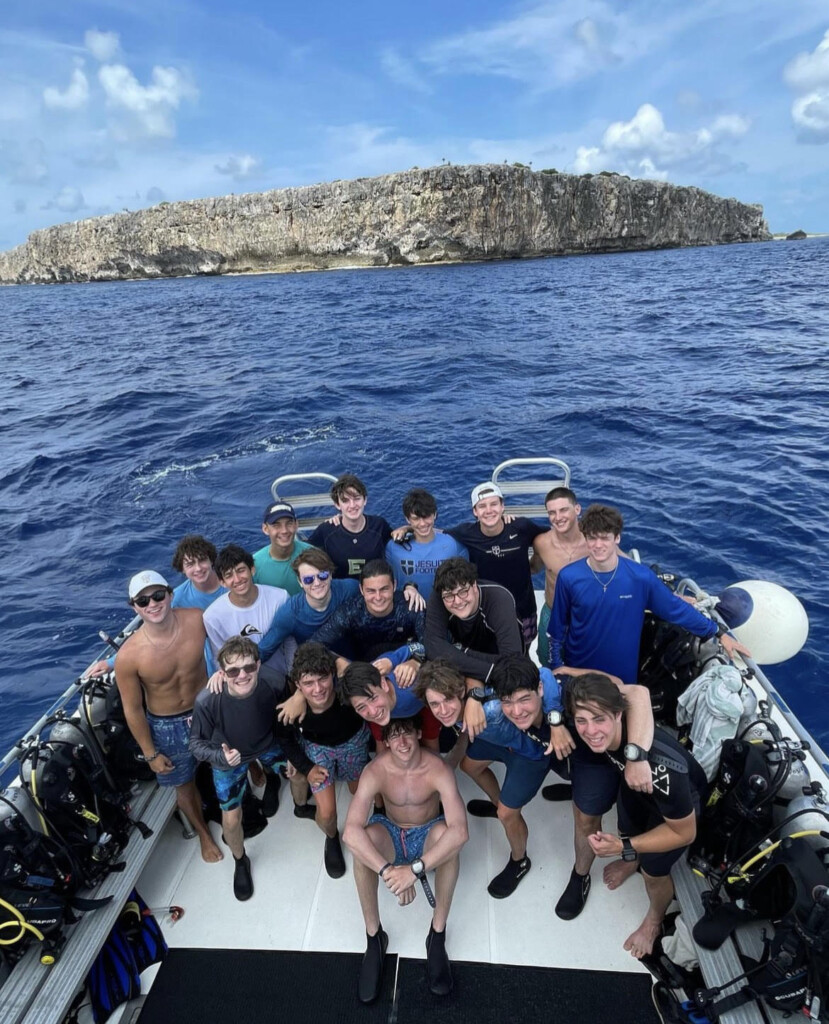
I had the opportunity to be a part of the program this year and it was one of the most enjoyable experiences I’ve had, yet it managed to be educational at the same time. The diving and trip built upon the foundations and principles taught within the class component of the course, and served as an excellent opportunity for hands-on experience and application of classwork. Each day a journal entry was to be completed summarizing the day and each dive, for this some important skills from class, such as fish and coral identification, were put to use.
The Dives
The ocean conditions at Cayman Brac were magnificent, the visibility was unimpeded, the water was a spectacular shade of blue, and the water was a warm 86 degrees Fahrenheit. The purpose of the trip was to immerse ourselves into marine environments, and we did just that. We were kept on our feet, or perhaps fins, with three dives each day. As we were repetitive diving, the first morning dive would be the deepest but also the shortest. This was in order to maximize our no-deco time. No-deco time is the amount of time you can stay underwater without having to complete additional decompression stops, which allow the amassed nitrogen to leave your body. As recreational divers we had to abide by these limits to stay safe. This meant that we had to end our dives before our air pressure reached 500 psi or a dive time of 60 minutes, whichever came first.

Majority of the students completed all seventeen dives on the trip despite the persistent challenges of seasickness, sinus issues and pressure complications. We experienced a variety of marine life and habitats ranging from reefs to walls and even a shipwreck. Each of the sites presented a different experience, a few locations featured strong currents and surge whilst others were shallow and protected by natural barriers.
“The trip was amazing. The dives were super fun and i got to know everyone on the trip better. ” – Winn Moore ’25
Day One
Like many activities, when diving after a period of inactivity it takes a while to get used to it again. The first day was mainly us getting comfortable in the water and with diving. For majority of the group it was also their first time diving in the ocean, as certification was done in Terrell at a flooded quarry. We dove at three sites on Cayman Brac, Grunt Valley, Patch Reef and Buccaneer Reef. These dives were amongst shallow yet vibrant reefs and were visually spectacular. Some marine life spotted were the likes of Green sea turtles, puffer fish, lobsters, stingrays and barracudas.
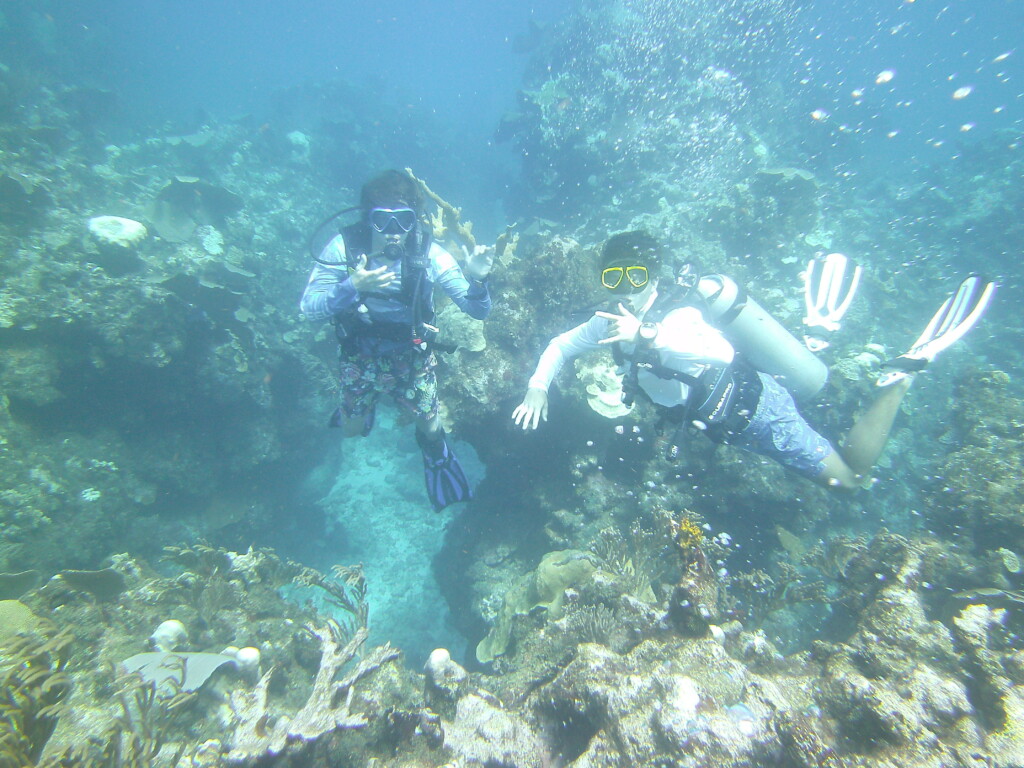
Day Two
For the second day we set out for our deepest dive of the trip, and after a hour long boat ride arrived at Brac’s sister island, Little Cayman. These dives presented a very different experience from the shallow reef dives we had undertaken so far. Diving through a swim-through we emerged onto the side of a sea wall, at over one hundred and twenty feet in depth. We dove at three sites at Little Cayman, Bloody Bay, Mikes Mount and Charlies Reef. For me these dives were a favourite, closely trailing our late shipwreck dive. However, in terms of the marine life we spotted our wall dives definitely took the top spot. On our first dive of the morning we encountered a Carribean Reef Shark, an experience that was a mix of scary yet wonderful.
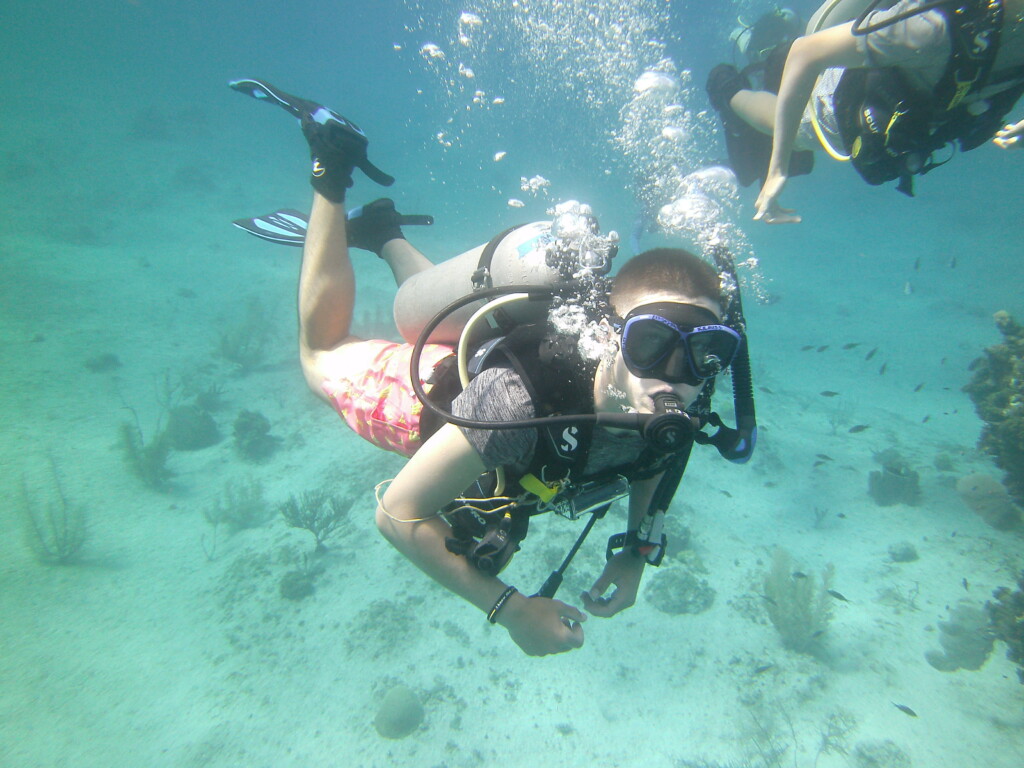
Day Three
By our third day, we had all drastically improved as divers and were well prepared for some more challenging dives. On day three we dove at the dives sites Wilderness Wall, Pillar Coral, and Elkhorn Forest. These sites were towards the south east of the island and were abundant with a vast variety of coral. A highlight of these dives were the narrow swim-throughs we attempted. The sites were also significantly closer to the resort than day two, so the shorter boat ride was much appreciated.
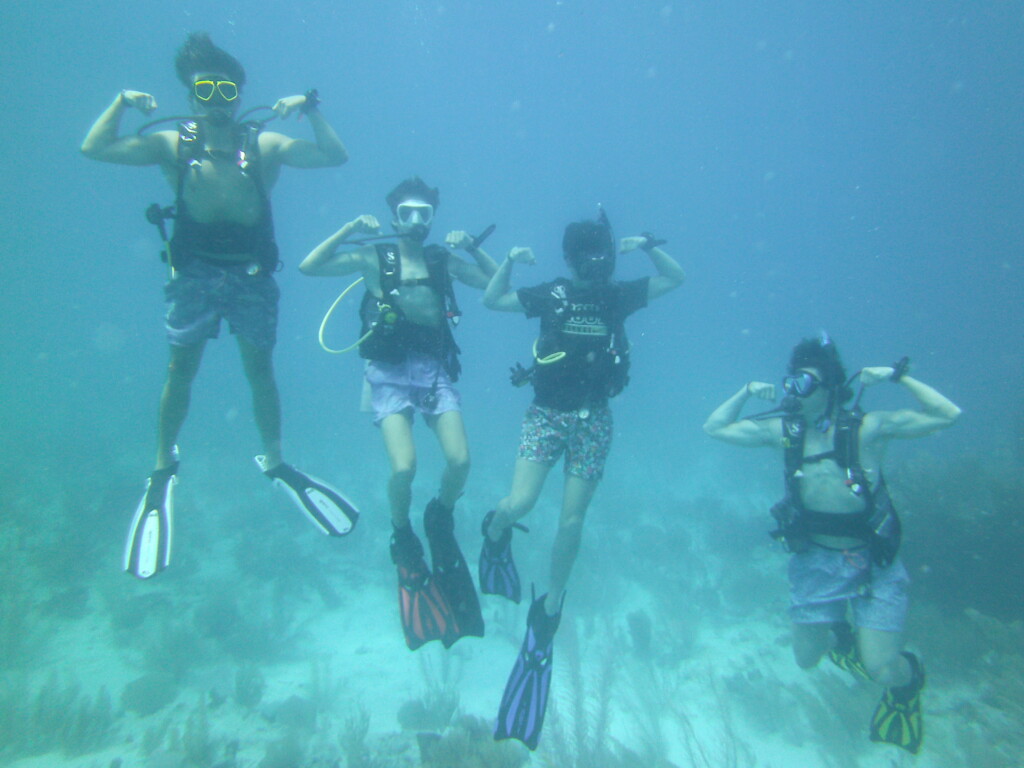
Day Four
Following another long boat ride today, we set out on our two morning dives near the north east point of the island. We dove at two sites before lunch, Son of Rock Monster and Window. These dives were the most physically challenging and exerting of the trip. Not only was there surge, but also a relatively strong current present off the northern tip of the island. While these dives were shallow, it was quite tiring having to swim back to the boat against the current. The afternoon dive at the site Sergeant Major was far more relaxing as it was a mere minute ride from the dock, and was full of marine life, particularly its namesake, sergeant majors.

Day Five
Setting out for our shipwreck dive, day five was the most anticipated of all. During the dives, we saw the wreck of the MV Captain Keith Tibbetts, a Koni II class Russian frigate that was sunk to create an artificial reef by the government of the Cayman Islands. This was my favorite dive of the trip as it was completely different from anything else and to be able to see a warship of this size and in good condition was amazing. Afterwards we dove at Turtle Alley and Angel Reef, although no turtles were to be seen.
“The shipwreck was the best. it was massive and still intact.” – Luke Deshotels ’25
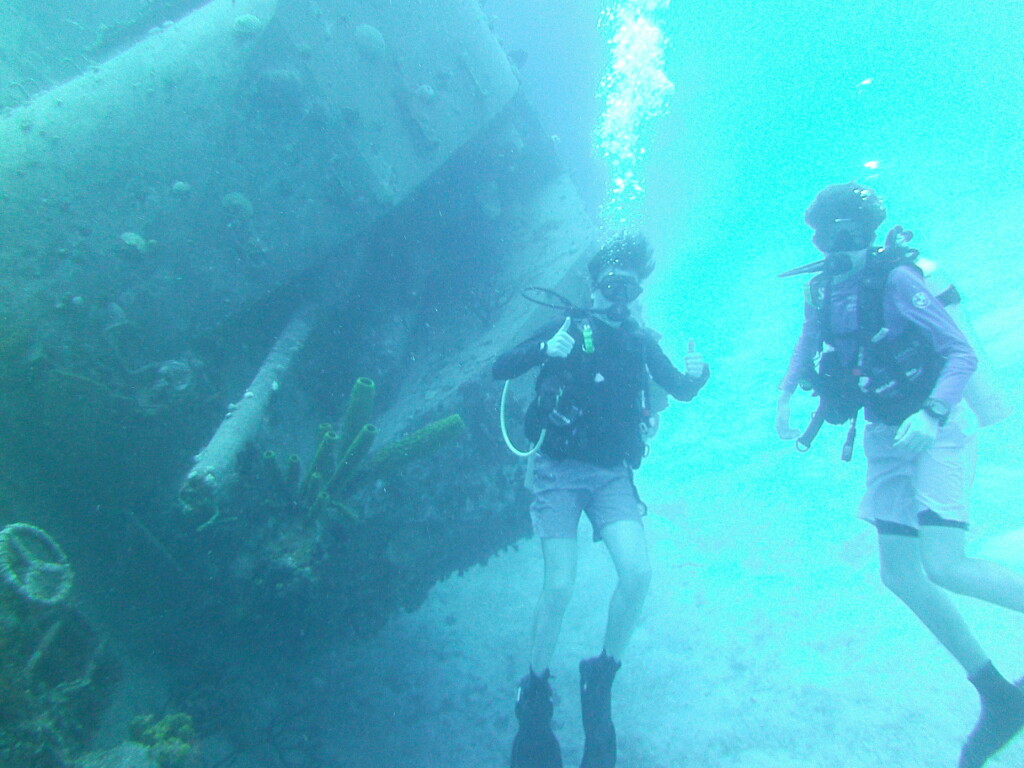
Day Six
Our final diving day had only two dives due to our flights the next morning and the potential risks of nitrogen complications while flying. We had two morning dives at sites Snapper Point and Fisheries. These dives were a change in pace as they were quite shallow, allowing us for longer dive times to look at the different rock formations and marine life. As a result we had an opportunity to look into more nooks and crannies and spotted a few nurse sharks, lemon rays, stingrays and pufferfish. We also encountered some invasive lionfish which our guides Jucky and Laura speared.
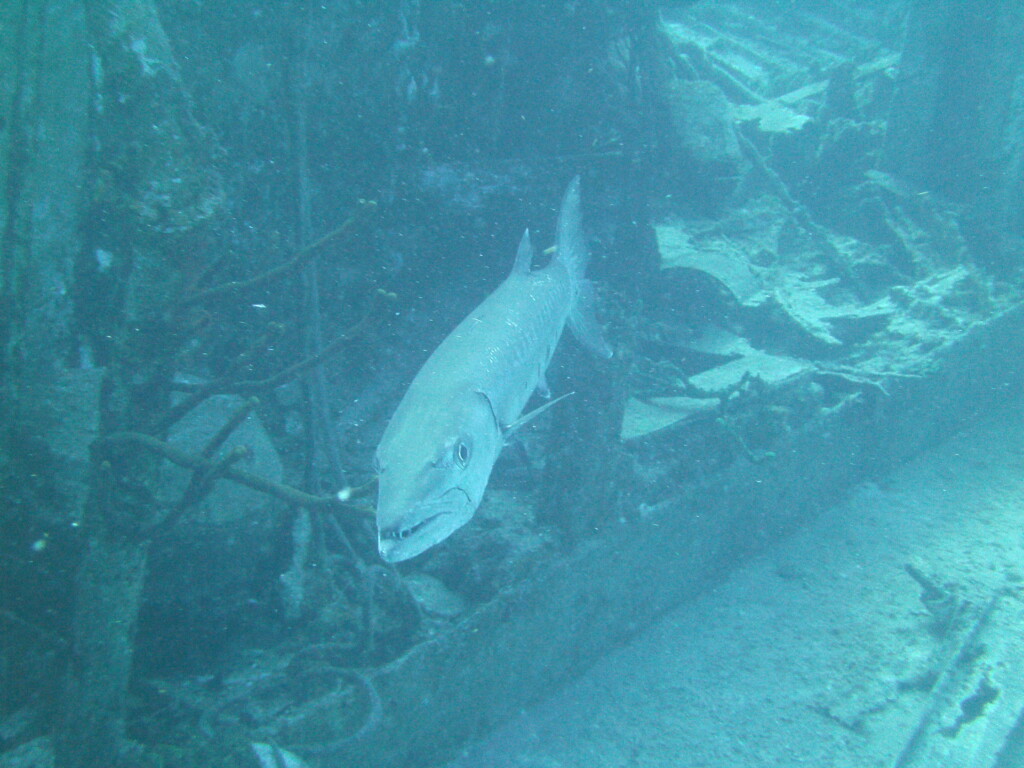
Final Thoughts
While the marine biology program obviously had an emphasis on the diving component of the trip, we also had a lot of free time and enjoyed many activities at the resort. One of our favorite past times during our time at Cayman Brac was beach volleyball, each day after lunch a tournament was held. The beach and pool was also a great way to relax after a tiring and demanding day of diving. However, my personal favorite were the activities held by the resort in the evening. We participated in various activities like bingo, trivia, karaoke and watched a bizarre yet captivating crab race. Although I think Mr. Marr’s rendition of ‘Take Me Home, Country Roads’ took the cake.


This trip was an extremely formative experience and truly a once in a lifetime opportunity. To go on a diving trip with eighteen other students, despite only originally knowing a few well, was amazing. Not only was the diving incredible and eye-opening but so were the connections I made. To think that I also earned a half-credit for science is also a great benefit that will help free up some time for me during my senior year, and has given me some skills and information to help with AP Biology. The teachers for the course made it fun and engaging whilst also teaching us about some really important topics that have applications in the real world such as marine pollution and environmental destruction.
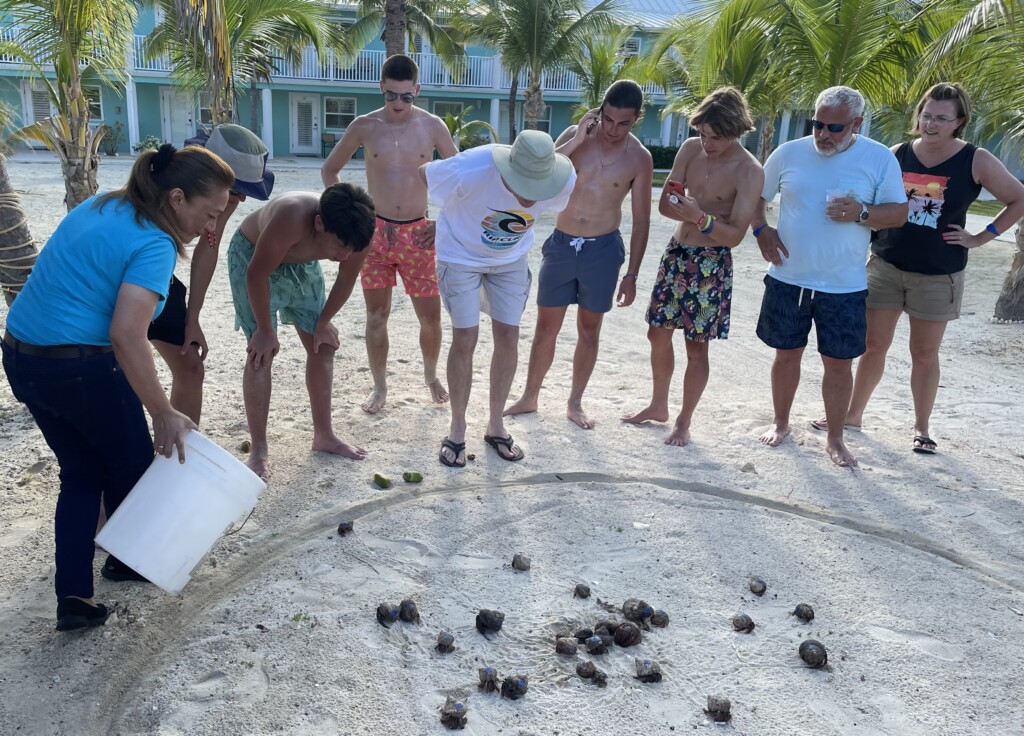
In closing, I would highly highly highly recommend this course to anyone in the future. the marine biology course has definitely been the most fun class I’ve taken at Jesuit, even with the trip aside it had interesting content. It’s something you don’t want to miss and I’m glad that I took the chance to go this year.
Stay tuned to The RoundUp for more news on School Trips and Events!
